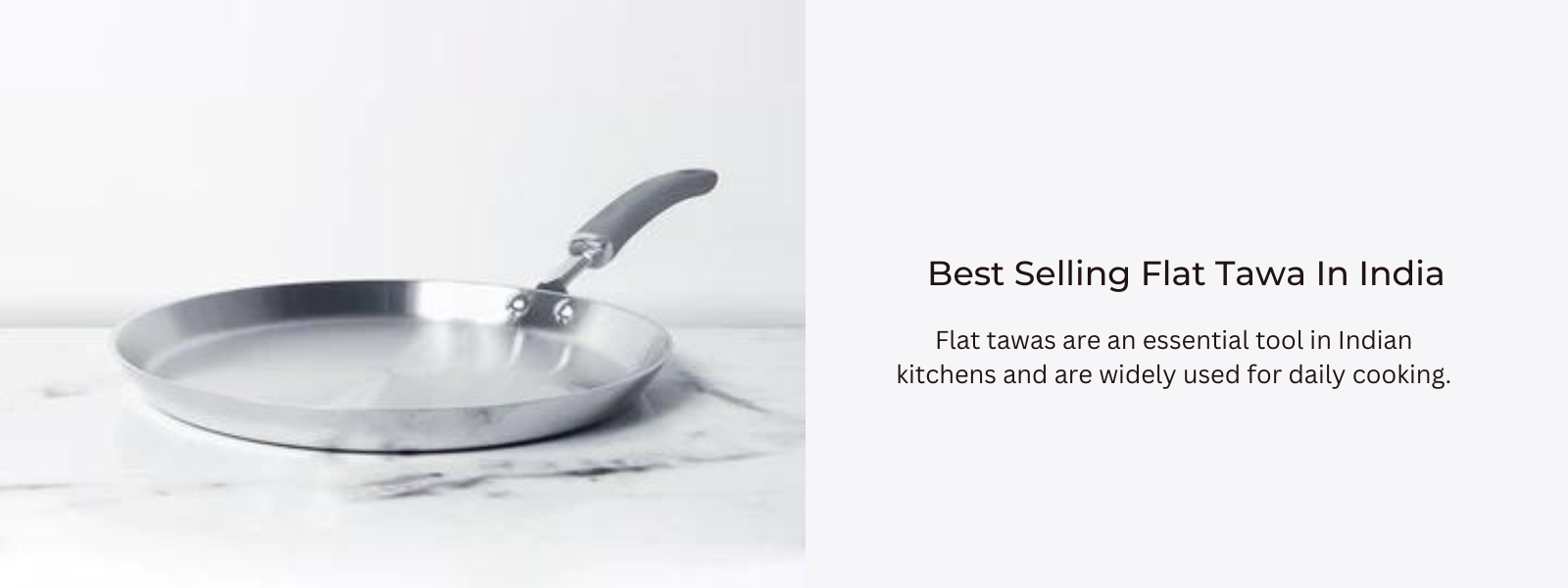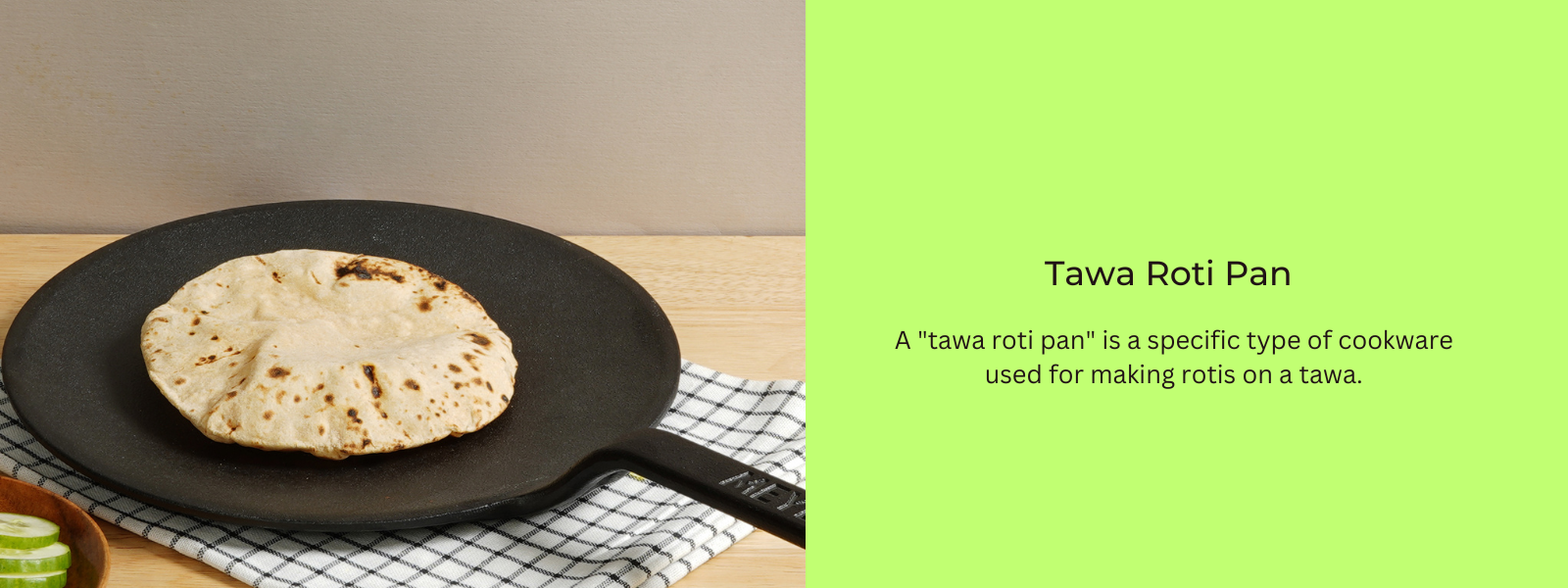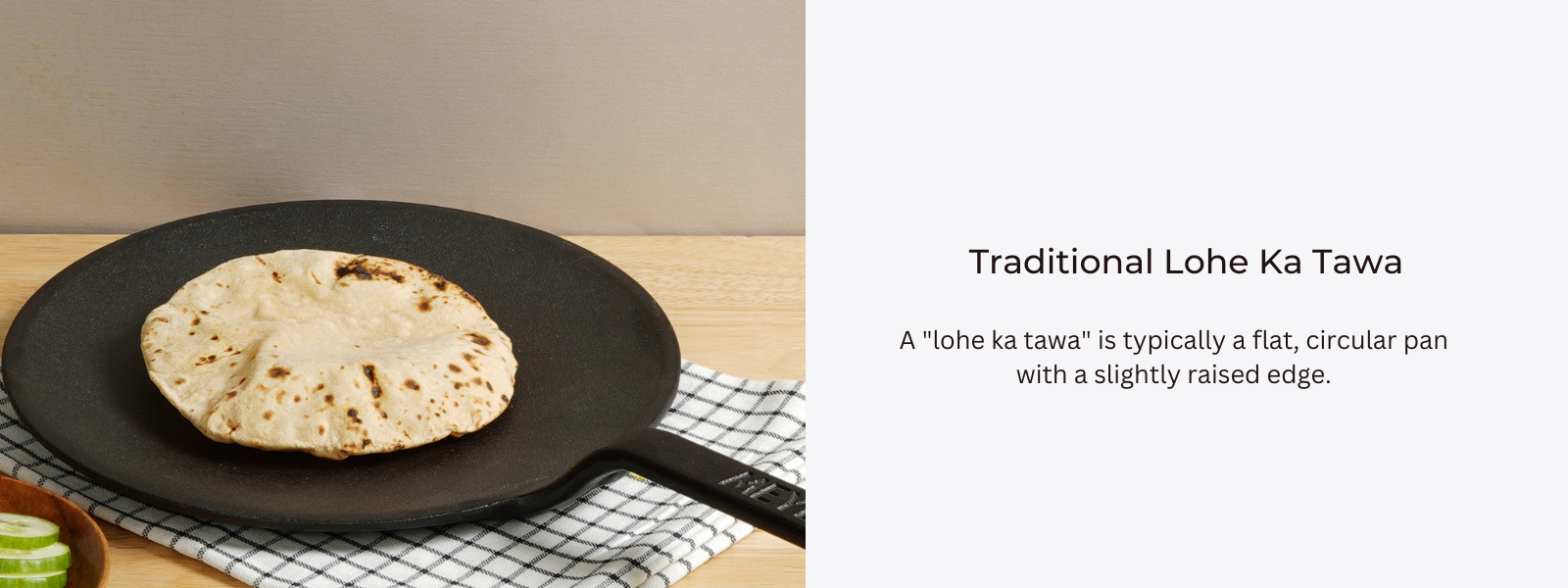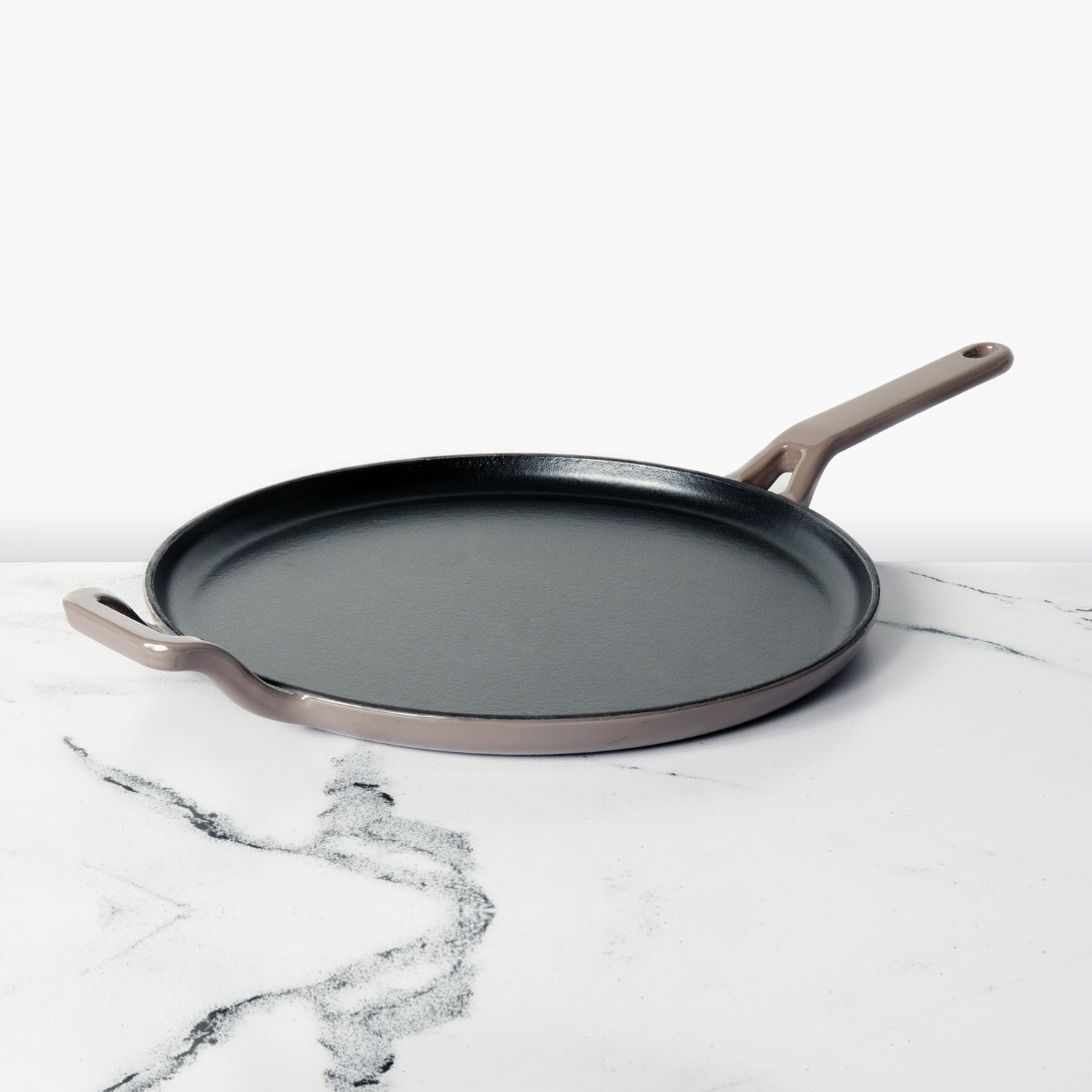In Indian kitchens, more is always less! Every Indian kitchen is equipped with an array of cookware in different materials and types, brass tawa is one of them! Brass, an alloy consisting of copper and zinc, is the material that it is constructed from. Because of its one-of-a-kind qualities and the numerous advantages they offer in the kitchen, tawas made of brass have been historically utilised in Indian families for many generations.
Table of Contents
Key Features Of A Brass Tawa:
- Material: Brass tawas are made from a combination of copper and zinc. The specific proportions of these metals may vary, resulting in different types of brass alloys.
- Heat Conductivity: Brass has excellent heat conductivity, allowing for even distribution of heat across the cooking surface. This helps in achieving uniform cooking of the food.
- Natural Non-Stick Properties: Over time and with proper use, brass tawas develop a natural non-stick surface. This reduces the need for excessive oil or ghee while cooking and makes it easier to flip and release the food.
- Versatility: Brass tawas can be used for cooking various Indian flatbreads like rotis, parathas, and chapatis. They are also suitable for making certain dosas and pancakes.
- Durability: Brass is a durable and long-lasting material when cared for properly. A well-maintained brass tawa can serve as a reliable cookware item for many years.
- Traditional Appeal: Brass tawas have a traditional and aesthetic appeal. They are often considered as heritage cookware, connecting with the culinary heritage of Indian cooking.
- Health Benefits: It is claimed that the small amounts of copper found in brass, which are present in cooking utensils made of brass, can provide a benefit to one's health. Copper is a mineral that is required for healthy bodily function and is well-known for the antibacterial effects it possesses.
Uses Of Brass Tawa:
The primary use of a brass tawa is for cooking various Indian flatbreads and other dishes. Brass tawas have been used traditionally in Indian households for generations due to their unique properties and cooking benefits. Here are some common uses of a brass tawa:
- Cooking Indian Flatbreads: When it comes to making Indian flatbreads like rotis, chapatis, and parathas, a brass tawa is your best bet. Brass's ability to disperse heat evenly is an asset when baking fluffy flatbreads.
- Making Dosas: Some brass tawas can also be used for making certain types of dosas, a type of Indian pancake. The even heat of the brass ensures that dosas cook uniformly and develop a crispy texture.
- Preparing Uttapam: Uttapam, a savory South Indian pancake made from fermented batter, can be cooked on certain brass tawas. The even heat distribution allows for a well-cooked and golden-brown uttapam.
- Cooking Pancakes and Crepes: Brass tawas can be used to cook pancakes and crepes, similar to a regular griddle. The even heat ensures that the pancakes cook evenly and develop a golden color.
- Roasting Papads and Poppadoms: Brass tawas are also used for roasting papads, which are thin Indian wafers. The even heat of the tawa ensures that the papads are roasted to perfection.
- Searing Vegetables and Meats: Brass tawas can be used to quickly sear vegetables and meats. The hot surface allows for a nice caramelization of the outer layer.
- Grilling and Frying: Some brass tawas can be used for grilling and shallow frying certain dishes.
How Is Brass Tawa Different From Other Tawas?
Brass tawas are different from other tawas in terms of material, properties, and some unique characteristics. Here are the key differences between brass tawas and other types of tawas, such as non-stick, cast iron, and stainless steel:
- Brass Tawa: Brass tawas are made from an alloy of copper and zinc, known as brass. The proportion of copper and zinc may vary, leading to different types of brass alloys.
- Non-stick Tawa:Cooking surfaces of non-stick tawas are often coated with polytetrafluoroethylene (PTFE), a substance that prevents food from adhering to the pan. Because this coating keeps food from adhering to the tawa, you won't need to use as much oil or ghee when you're cooking with it.
- Cast Iron Tawa: Cast iron tawas are made entirely of cast iron, known for its excellent heat retention and even heat distribution properties.
- Stainless Steel Tawa: Stainless steel tawas are made from stainless steel, known for its durability and resistance to rust and corrosion.
- Brass Tawa: Brass has good heat conductivity, allowing for even distribution of heat across the cooking surface, resulting in uniform cooking of food.
- Non-stick Tawa: Non-stick tawas may have slightly lower heat conductivity compared to brass, cast iron, or stainless steel, but their non-stick surface makes them convenient for cooking with less oil.
- Cast Iron Tawa: Cast iron has excellent heat retention and even heat distribution, making it ideal for cooking at high temperatures and achieving a well-cooked crust on flatbreads.
- Stainless Steel Tawa: Stainless steel has moderate heat conductivity, which requires some attention to prevent uneven cooking.
- Brass Tawa: Brass tawas can develop a natural non-stick surface over time and with proper seasoning and use. This property reduces the need for excessive oil while cooking.
- Non-stick Tawa: Non-stick tawas come with a built-in non-stick coating that minimizes food sticking and makes cleaning easier.
- Cast Iron Tawa: Cast iron tawas can develop a natural non-stick surface with proper seasoning, but they generally require more oil or ghee during cooking.
- Stainless Steel Tawa: Stainless steel tawas lack inherent non-stick properties and may require more oil or attention to prevent sticking.
- Brass Tawa: Brass tawas require proper maintenance, including regular seasoning, to preserve their non-stick properties and prevent tarnishing.
- Non-stick Tawa: Non-stick tawas are relatively easy to clean and maintain, as food is less likely to stick to the non-stick coating.
- Cast Iron Tawa: Cast iron tawas need proper seasoning to maintain their non-stick surface and prevent rusting.
- Stainless Steel Tawa: Stainless steel tawas are generally easy to clean and maintain, but they may require more oil during cooking to prevent sticking.
Each type of tawa offers distinct advantages and characteristics, and the choice of tawa depends on individual preferences, cooking techniques, and desired outcomes.
Conclusion:
While brass tawas offer several advantages, it's important to note that they require proper care and maintenance to preserve their non-stick properties and prevent tarnishing. Brass cookware should be cleaned gently and should not be used for cooking acidic or citric foods, as the acid can react with the metal and affect the taste of the food. Proper seasoning and regular maintenance are essential for enjoying the benefits of a brass tawa over the years.











Leave a comment